
RAISE UP STUDY for Adults with Narcolepsy Type 1 (NT1)
RECRUITMENT COMPLETE as of August 2023 for adults (18 and over) with Narcolepsy Type 1: CLICK HERE. If you have narcolepsy with cataplexy (also known as narcolepsy type 1), you may be eligible to participate in research. The purpose of the RaiseUp Study is to evaluate the safety and effectiveness of an investigational study drug in the treatment of adults who have narcolepsy type 1 (NT1). This study may help researchers understand how the body processes the investigational study drug and how it may affect excessive daytime sleepiness (EDS). Who Can Participate? Eligible participants must: Be 18 to 70 years of age. Have received an NT1 diagnosis within the past 10 years or are experiencing NT1 symptoms (characterized by cataplexy, or the sudden loss of muscle control and muscle weakness due to strong emotions or actions, like anger or laughter, while remaining conscious). Be willing to stop any current NT1 treatment. For more information about the RaiseUp Study or to take the prescreening questionnaire and see if you may qualify, talk to your doctor and visit the RaiseUp Study website.
RECRUITMENT COMPLETE as of August 2023 for adults (18 and over) with Narcolepsy Type 1: CLICK HERE.
If you have narcolepsy with cataplexy (also known as narcolepsy type 1), you may be eligible to participate in research. The purpose of the RaiseUp Study is to evaluate the safety and effectiveness of an investigational study drug in the treatment of adults who have narcolepsy type 1 (NT1). This study may help researchers understand how the body processes the investigational study drug and how it may affect excessive daytime sleepiness (EDS).
Who Can Participate?
Eligible participants must:
- Be 18 to 70 years of age.
- Have received an NT1 diagnosis within the past 10 years or are experiencing NT1 symptoms (characterized by cataplexy, or the sudden loss of muscle control and muscle weakness due to strong emotions or actions, like anger or laughter, while remaining conscious).
- Be willing to stop any current NT1 treatment.
For more information about the RaiseUp Study or to take the prescreening questionnaire and see if you may qualify, talk to your doctor and visit the RaiseUp Study website.
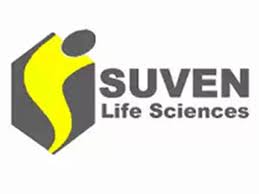
A Study to Evaluate Safety and Efficacy of SUVN-G3031 in Patients With Narcolepsy With and Without Cataplexy
RECRUITMENT COMPLETE as of June 2023 for people with narcolepsy (type 1 and 2) age 18-50 in the U.S.: CLICK HERE for research sites across the U.S. This is a Phase 2 clinical trial of SUVN-G3031, which is an investigational medicine (a histamine H3 receptor inverse agonist, similar to pitolisant, which is a tablet taken once daily). Preclinical information can be found HERE. For further information from clinicaltrials.gov, CLICK HERE. This research study is testing the effectiveness of SUVN-G3031 to reduce the symptoms of narcolepsy. Qualified participants will be seen by a doctor and receive all study-related exams, care and medications at no cost. Those who qualify will be asked to participate for approximately 7 weeks, which will include at least 5 visits to their study doctor, and 3 overnight stays for a sleep study. Compensation for time and travel may be available.
RECRUITMENT COMPLETE as of June 2023 for people with narcolepsy (type 1 and 2) age 18-50 in the U.S.: CLICK HERE for research sites across the U.S. This is a Phase 2 clinical trial of SUVN-G3031, which is an investigational medicine (a histamine H3 receptor inverse agonist, similar to pitolisant, which is a tablet taken once daily). Preclinical information can be found HERE. For further information from clinicaltrials.gov, CLICK HERE.
This research study is testing the effectiveness of SUVN-G3031 to reduce the symptoms of narcolepsy. Qualified participants will be seen by a doctor and receive all study-related exams, care and medications at no cost. Those who qualify will be asked to participate for approximately 7 weeks, which will include at least 5 visits to their study doctor, and 3 overnight stays for a sleep study. Compensation for time and travel may be available.
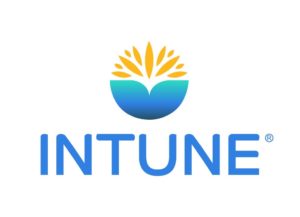
INTUNE: A Clinical Study in Adults With Idiopathic Hypersomnia (IH)
RECRUITMENT COMPLETE as of April 2023 for adults (18 and over) with IH: CLICK HERE. The INTUNE study is being conducted by Harmony Biosciences to evaluate the safety and efficacy of pitolisant, an investigational medication for treating excessive daytime sleepiness (EDS) in people with idiopathic hypersomnia age 18 years or older. This study is also evaluating the effect of pitolisant on overall symptoms and severity of IH, sleep inertia, cognition, and general sleep-related impairment. This clinical study consists of a screening period (up to 28 days), an 8-week Open-Label Phase in which all eligible study participants will receive pitolisant, followed by a 4-week Double-Blind Randomized Withdrawal Phase in which study participants and doctors won’t know who is receiving pitolisant or placebo (a tablet that does not contain study drug). For more information or to find a participating clinical site visit: NCT05156047 at clinicaltrials.gov or www.intuneihstudy.com/. Contact Harmony Biosciences by email at .
RECRUITMENT COMPLETE as of April 2023 for adults (18 and over) with IH: CLICK HERE.
The INTUNE study is being conducted by Harmony Biosciences to evaluate the safety and efficacy of pitolisant, an investigational medication for treating excessive daytime sleepiness (EDS) in people with idiopathic hypersomnia age 18 years or older.
This study is also evaluating the effect of pitolisant on overall symptoms and severity of IH, sleep inertia, cognition, and general sleep-related impairment.
This clinical study consists of a screening period (up to 28 days), an 8-week Open-Label Phase in which all eligible study participants will receive pitolisant, followed by a 4-week Double-Blind Randomized Withdrawal Phase in which study participants and doctors won’t know who is receiving pitolisant or placebo (a tablet that does not contain study drug).
For more information or to find a participating clinical site visit: NCT05156047 at clinicaltrials.gov or www.intuneihstudy.com/.

Modafinil Versus Amphetamines for the Treatment of Narcolepsy Type 2 and Idiopathic Hypersomnia
RECRUITMENT COMPLETE as of April 2023 for adults with IH or NT2 (who are newly diagnosed and untreated) at Emory University in Atlanta, GA, U.S.: CLICK HERE. “This study will evaluate which medication works better to improve sleepiness. The researchers will also see which medication is better for other symptoms including difficulty waking up and difficulty thinking, as well as seeing which medication causes fewer side [effects]. Finally, this study will see if any information about patients (such as age or sleep study features) predicts responding better to one medication or the other.”
RECRUITMENT COMPLETE as of April 2023 for adults with IH or NT2 (who are newly diagnosed and untreated) at Emory University in Atlanta, GA, U.S.: CLICK HERE. “This study will evaluate which medication works better to improve sleepiness. The researchers will also see which medication is better for other symptoms including difficulty waking up and difficulty thinking, as well as seeing which medication causes fewer side [effects]. Finally, this study will see if any information about patients (such as age or sleep study features) predicts responding better to one medication or the other.”
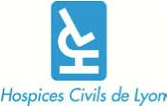
Study of the Academic and Professional Course of Narcoleptic Patients
RECRUITMENT COMPLETED as of April 2023 for children and adults with narcolepsy type 1, in France: CLICK HERE. This study proposes “to establish a comprehensive inventory of educational and professional trajectories of narcoleptic patients in France in order assess the specificity of the difficulties encountered by the people concerned in their life course and to appreciate the attitude of the academic and professional circle with respect to the disease.”
RECRUITMENT COMPLETED as of April 2023 for children and adults with narcolepsy type 1, in France: CLICK HERE. This study proposes “to establish a comprehensive inventory of educational and professional trajectories of narcoleptic patients in France in order assess the specificity of the difficulties encountered by the people concerned in their life course and to appreciate the attitude of the academic and professional circle with respect to the disease.”
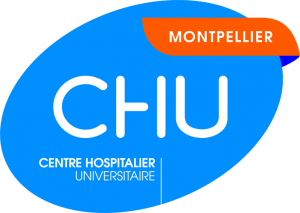
Sodium Oxybate (Xyrem) for Treatment of Excessive Daytime Sleepiness due to IH
RECRUITMENT COMPLETE as of June 2022 for adults age 18-60 with IH in FRANCE: CLICK HERE. This study, sponsored by the University Hospital in Montpellier, France, will evaluate the efficacy of sodium oxybate (marketed as Xyrem) on excessive daytime sleepiness in people with idiopathic hypersomnia.
RECRUITMENT COMPLETE as of June 2022 for adults age 18-60 with IH in FRANCE: CLICK HERE. This study, sponsored by the University Hospital in Montpellier, France, will evaluate the efficacy of sodium oxybate (marketed as Xyrem) on excessive daytime sleepiness in people with idiopathic hypersomnia.
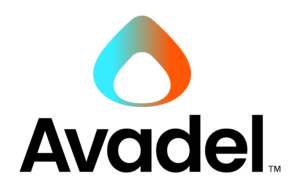
RESTORE: Once Nightly Formulation of Sodium Oxybate (FT218) for Treatment of Excessive Daytime Sleepiness and Cataplexy in Narcolepsy
RECRUITMENT COMPLETE as of June 2022 for people age 16 and up with narcolepsy type 1 or 2 in the U.S.: CLICK HERE. The Restore study is an open label study of FT218, a once-nightly formulation of sodium oxybate in people with narcolepsy. This study is evaluating the long-term safety and tolerability of a once-nightly formulation of sodium oxybate for extended-release oral suspension (FT218) and the ability to switch from twice-nightly immediate release sodium oxybate to once-nightly FT218 for people with narcolepsy. For more information or to find a participating clinical site visit https://clinicaltrials.gov/ct2/show/NCT04451668. As of March 1, 2021, the U.S. FDA has accepted Avadel’s New Drug Application for once-nightly FT218 for review and assigned a target Prescription Drug User Fee Act action date of October 15, 2021. Check out the press release. For information on the prior phase 3 clinical trial, CLICK HERE (and check out this Aug. 2021 journal article). Also, see Avadel Pharmaceuticals Announces Submission of New Drug Application for FT218 to the FDA (December 2020).
RECRUITMENT COMPLETE as of June 2022 for people age 16 and up with narcolepsy type 1 or 2 in the U.S.: CLICK HERE. The Restore study is an open label study of FT218, a once-nightly formulation of sodium oxybate in people with narcolepsy. This study is evaluating the long-term safety and tolerability of a once-nightly formulation of sodium oxybate for extended-release oral suspension (FT218) and the ability to switch from twice-nightly immediate release sodium oxybate to once-nightly FT218 for people with narcolepsy. For more information or to find a participating clinical site visit https://clinicaltrials.gov/ct2/show/NCT04451668.
As of March 1, 2021, the U.S. FDA has accepted Avadel’s New Drug Application for once-nightly FT218 for review and assigned a target Prescription Drug User Fee Act action date of October 15, 2021. Check out the press release.
For information on the prior phase 3 clinical trial, CLICK HERE (and check out this Aug. 2021 journal article). Also, see Avadel Pharmaceuticals Announces Submission of New Drug Application for FT218 to the FDA (December 2020).
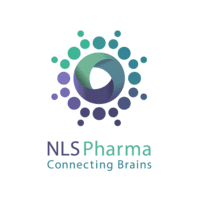
Four-Week Study of the Safety and Efficacy of NLS-2 (Mazindol Extended Release) in the Treatment of Narcolepsy
RECRUITMENT COMPLETE as of June 2022 for adults age 18 to 65 with narcolepsy (with or without cataplexy) in the U.S.: CLICK HERE. “This is a double-blind, randomized, placebo-controlled, multicenter trial of NLS-2 in adult patients with narcolepsy. The study will enroll approximately 60 patients and eligible patients will be treated to receive either NLS-2 or placebo for 4-weeks.”
RECRUITMENT COMPLETE as of June 2022 for adults age 18 to 65 with narcolepsy (with or without cataplexy) in the U.S.: CLICK HERE. “This is a double-blind, randomized, placebo-controlled, multicenter trial of NLS-2 in adult patients with narcolepsy. The study will enroll approximately 60 patients and eligible patients will be treated to receive either NLS-2 or placebo for 4-weeks.”

A Web-Based Observational Study of Patient-Reported Outcomes in Adults With Narcolepsy
RECRUITMENT COMPLETE as of April 2022 for people with narcolepsy (both with and without cataplexy): CLICK HERE This is the Nexus Narcolepsy registry, a joint venture of Jazz Pharmaceuticals, Narcolepsy Network, and Wake Up Narcolepsy. See ClinicalTrials.gov.
RECRUITMENT COMPLETE as of April 2022 for people with narcolepsy (both with and without cataplexy): CLICK HERE
This is the Nexus Narcolepsy registry, a joint venture of Jazz Pharmaceuticals, Narcolepsy Network, and Wake Up Narcolepsy. See ClinicalTrials.gov.

A Study to Learn How Family Members Are Affected by IH and Narcolepsy
RECRUITMENT COMPLETE for adults (18 and over) with a family member with IH or narcolepsy: CLICK HERE The Behavioral Sleep Medicine Lab at Northwestern University is seeking participants for their EXPLAIN Study (Examination of Partners and Loved Ones of Adults with Idiopathic Hypersomnia and Narcolepsy), to learn how family members are affected by their loved one’s IH/narcolepsy, how family members provide support, and the types of support family members themselves need. You may be eligible if: You are an adult (18 or older). Your partner or adult family member has IH or narcolepsy. Eligible volunteers will be asked to complete an online survey that will take approximately 15 minutes. Participants will not receive any compensation. For more information, visit the EXPLAIN Study website. Principal Investigator: Jennifer Mundt, PhD / STU00216960
RECRUITMENT COMPLETE for adults (18 and over) with a family member with IH or narcolepsy: CLICK HERE
The Behavioral Sleep Medicine Lab at Northwestern University is seeking participants for their EXPLAIN Study (Examination of Partners and Loved Ones of Adults with Idiopathic Hypersomnia and Narcolepsy), to learn how family members are affected by their loved one’s IH/narcolepsy, how family members provide support, and the types of support family members themselves need.
You may be eligible if:
- You are an adult (18 or older).
- Your partner or adult family member has IH or narcolepsy.
Eligible volunteers will be asked to complete an online survey that will take approximately 15 minutes.
Participants will not receive any compensation.
For more information, visit the EXPLAIN Study website.
Principal Investigator: Jennifer Mundt, PhD / STU00216960

Awareness and Self-Compassion Enhancing Narcolepsy Treatment (ASCENT)
RECRUITMENT COMPLETED as of January 2022 for adults with narcolepsy (type 1 or 2) in the U.S. The Behavioral Sleep Medicine Lab at Northwestern is evaluating the feasibility of a mindfulness meditation program designed to reduce psychological distress for people with narcolepsy. The principal investigator is Jason Ong, PhD, a member of HF’s medical advisory board. Eligible volunteers will be asked to: Complete an assessment to determine eligibility to participate. Participate in a mindfulness intervention delivered through live video conferencing. Complete study assessments every four weeks for 12 weeks. For more information, please email or call (312) 503-6627. For more information from clincialtrials.gov, CLICK HERE. This is a follow-up to the PATH study.
RECRUITMENT COMPLETED as of January 2022 for adults with narcolepsy (type 1 or 2) in the U.S. The Behavioral Sleep Medicine Lab at Northwestern is evaluating the feasibility of a mindfulness meditation program designed to reduce psychological distress for people with narcolepsy. The principal investigator is Jason Ong, PhD, a member of HF’s medical advisory board.
Eligible volunteers will be asked to:
- Complete an assessment to determine eligibility to participate.
- Participate in a mindfulness intervention delivered through live video conferencing.
- Complete study assessments every four weeks for 12 weeks.
For more information, please email or call (312) 503-6627. For more information from clincialtrials.gov, CLICK HERE.
This is a follow-up to the PATH study.
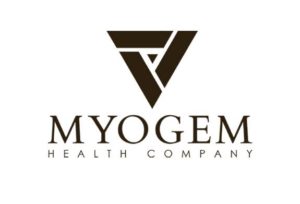
Effect of MYODM on Quality of Life, Fatigue and Hypersomnia in Patients With Myotonic Dystrophy Type 1
RECRUITMENT COMPLETE as of December 2021 of adults age 18 and up with myotonic dystrophy type 1 in Spain: CLICK HERE. This trial is testing the dietary supplement MYODM, which contains Theobroma cacao and caffeine for the treatment of excessive daytime sleepiness due to myotonic dystrophy type 1 (DM1). Read more: Viewing Hypersomnias Through the Lens of Myotonic Dystrophy.
RECRUITMENT COMPLETE as of December 2021 of adults age 18 and up with myotonic dystrophy type 1 in Spain: CLICK HERE. This trial is testing the dietary supplement MYODM, which contains Theobroma cacao and caffeine for the treatment of excessive daytime sleepiness due to myotonic dystrophy type 1 (DM1).
Read more: Viewing Hypersomnias Through the Lens of Myotonic Dystrophy.

Takeda’s Sparkle Studies: Evaluating Novel Orexin 2 Receptor Agonists for IH and Narcolepsy
The SPARKLE studies are testing investigational orexin 2 receptor agonists (intravenous TAK-925 and oral TAK-994) to see if they could potentially be a safe and effective way to help increase wakefulness for people with idiopathic hypersomnia or narcolepsy. SPARKLE 1501: STOPPED EARLY as of October 2021 (see Takeda’s Press Release). This phase 2 study was evaluating the safety, tolerability, pharmacokinetics, and pharmacodynamics of multiple rising oral doses of TAK-994 in people with narcolepsy. (See also clinicaltrials.gov info HERE and HERE.) SPARKLE 2002: RECRUITING/ENROLLMENT COMPLETED as of November 2020 (further info from ClinicalTrials.gov). This phase 1 study was designed to evaluate the pharmacokinetics (PK), pharmacodynamics (PD), safety and tolerability of an intravenous (IV) dose of TAK-925 in adults who have been diagnosed with idiopathic hypersomnia (IH). These are follow-ups to Takeda’s earlier studies: 1) “Phase 1 TAK-925 Study in Healthy Adult and Elderly Volunteers and Patients with Narcolepsy” (further info from ClinicalTrials.gov); 2) “A Study to Evaluate the Safety, Tolerability, Pharmacokinetics and Pharmacodynamics of TAK-925 in Healthy Volunteers and Patients with Narcolepsy” (further info from ClinicalTrials.gov). See also Takeda’s September 2019 Press Release: New Data Presented at World Sleep Congress Demonstrate Early Signs of Efficacy for TAK-925, a Selective Orexin Type-2 Receptor (OX2R) Agonist, in Patients with Narcolepsy Type 1
The SPARKLE studies are testing investigational orexin 2 receptor agonists (intravenous TAK-925 and oral TAK-994) to see if they could potentially be a safe and effective way to help increase wakefulness for people with idiopathic hypersomnia or narcolepsy.
SPARKLE 1501: STOPPED EARLY as of October 2021 (see Takeda’s Press Release). This phase 2 study was evaluating the safety, tolerability, pharmacokinetics, and pharmacodynamics of multiple rising oral doses of TAK-994 in people with narcolepsy. (See also clinicaltrials.gov info HERE and HERE.)
SPARKLE 2002: RECRUITING/ENROLLMENT COMPLETED as of November 2020 (further info from ClinicalTrials.gov). This phase 1 study was designed to evaluate the pharmacokinetics (PK), pharmacodynamics (PD), safety and tolerability of an intravenous (IV) dose of TAK-925 in adults who have been diagnosed with idiopathic hypersomnia (IH).
These are follow-ups to Takeda’s earlier studies: 1) “Phase 1 TAK-925 Study in Healthy Adult and Elderly Volunteers and Patients with Narcolepsy” (further info from ClinicalTrials.gov); 2) “A Study to Evaluate the Safety, Tolerability, Pharmacokinetics and Pharmacodynamics of TAK-925 in Healthy Volunteers and Patients with Narcolepsy” (further info from ClinicalTrials.gov).
See also Takeda’s September 2019 Press Release: New Data Presented at World Sleep Congress Demonstrate Early Signs of Efficacy for TAK-925, a Selective Orexin Type-2 Receptor (OX2R) Agonist, in Patients with Narcolepsy Type 1

New Drug GATE-101 for Excessive Daytime Sleepiness or Depression
RECRUITED normal/healthy adults age 18 to 40 in New Jersey, USA through Aug. 2021: CLICK HERE. This trial tested the safety, tolerability and phamacokinetics of GATE-101, a metabotropic glutamate type 2/3 receptor antagonist. All glutamate receptors bind with glutamate, an amino acid that functions as an excitatory neurotransmitter. The eventual goal of this treatment is to improve excessive sleepiness or major depressive disorder.
RECRUITED normal/healthy adults age 18 to 40 in New Jersey, USA through Aug. 2021: CLICK HERE. This trial tested the safety, tolerability and phamacokinetics of GATE-101, a metabotropic glutamate type 2/3 receptor antagonist. All glutamate receptors bind with glutamate, an amino acid that functions as an excitatory neurotransmitter. The eventual goal of this treatment is to improve excessive sleepiness or major depressive disorder.

Portable EEG in Narcolepsy Type 1 and Healthy Volunteers
RECRUITMENT COMPLETE as of May 2021 for people age 16 to 60 with narcolepsy type 1 and healthy volunteers in the U.S.: CLICK HERE. The study will assess whether a portable EEG device provides an EEG signal comparable to inpatient nPSG (noctural polysomnogram). The frequency and characteristics of wake and sleep patterns and transitions over multiple nights will also be characterized.
RECRUITMENT COMPLETE as of May 2021 for people age 16 to 60 with narcolepsy type 1 and healthy volunteers in the U.S.: CLICK HERE. The study will assess whether a portable EEG device provides an EEG signal comparable to inpatient nPSG (noctural polysomnogram). The frequency and characteristics of wake and sleep patterns and transitions over multiple nights will also be characterized.
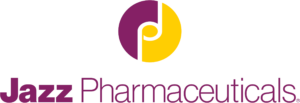
Real World Idiopathic Hypersomnia Outcomes Patient Survey
RECRUITMENT COMPLETE as of April 2021 for patients with idiopathic hypersomnia in the U.S. for the Real World Idiopathic Hypersomnia Outcomes Patient Survey. Jazz Pharmaceuticals, in collaboration with Stratevi and inVibe Labs, is conducting a real-world idiopathic hypersomnia outcomes patient survey to understand patient experiences with idiopathic hypersomnia, how it impacts their lives, and their perspectives regarding their current treatment regimen. Participation involves completing an online survey. The participant may also be selected to answer several open-ended questions through an automated voice response system, which participants would call into using their mobile phone.
RECRUITMENT COMPLETE as of April 2021 for patients with idiopathic hypersomnia in the U.S. for the Real World Idiopathic Hypersomnia Outcomes Patient Survey.
Jazz Pharmaceuticals, in collaboration with Stratevi and inVibe Labs, is conducting a real-world idiopathic hypersomnia outcomes patient survey to understand patient experiences with idiopathic hypersomnia, how it impacts their lives, and their perspectives regarding their current treatment regimen. Participation involves completing an online survey. The participant may also be selected to answer several open-ended questions through an automated voice response system, which participants would call into using their mobile phone.
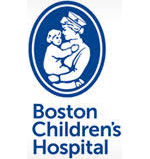
Pediatric Hypersomnia Screening Survey
RECRUITMENT COMPLETE as of January 2021. Dr. Kiran Maski, pediatric neurologist and sleep medicine specialist at Boston Children’s Hospital, and a member of the Hypersomnia Foundation’s Medical Advisory Board, has developed a questionnaire that aims to improve screening for narcolepsy and idiopathic hypersomnia, with the goal of helping health care professionals identify hypersomnia symptoms quickly. Boston Children’s Hospital recruited participants between the ages of 8-18 years who had been recently diagnosed (within 1 year) with narcolepsy or idiopathic hypersomnia (or who were awaiting diagnosis with sleep study testing) to answer an online questionnaire. If you would like to learn more about the study, please send an email to Neuro Sleep Research () or call 617-919-6212. More info HERE.
RECRUITMENT COMPLETE as of January 2021. Dr. Kiran Maski, pediatric neurologist and sleep medicine specialist at Boston Children’s Hospital, and a member of the Hypersomnia Foundation’s Medical Advisory Board, has developed a questionnaire that aims to improve screening for narcolepsy and idiopathic hypersomnia, with the goal of helping health care professionals identify hypersomnia symptoms quickly. Boston Children’s Hospital recruited participants between the ages of 8-18 years who had been recently diagnosed (within 1 year) with narcolepsy or idiopathic hypersomnia (or who were awaiting diagnosis with sleep study testing) to answer an online questionnaire. If you would like to learn more about the study, please send an email to Neuro Sleep Research () or call 617-919-6212. More info HERE.
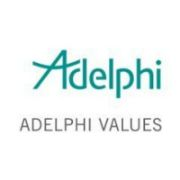
Qualitative Health Research Study on Living With IH
RECRUITMENT COMPLETE as of January 2021. CLICK HERE to review the study flyer.
RECRUITMENT COMPLETE as of January 2021. CLICK HERE to review the study flyer.

Hypersomnia in Major Depressive Disorder
RECRUITMENT STATUS UNKOWN as of 2020 for adults age 18-64 with major depression (with or without hypersomnolence) at The Chinese University of Hong Kong: CLICK HERE.
RECRUITMENT STATUS UNKOWN as of 2020 for adults age 18-64 with major depression (with or without hypersomnolence) at The Chinese University of Hong Kong: CLICK HERE.
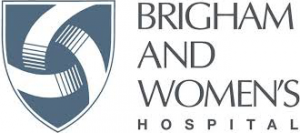
Evaluation of the Efficacy of Sodium Oxybate (Xyrem) in Treatment of Post-Traumatic Narcolepsy and Post-Traumatic Hypersomnia
RECRUITED adults with post-traumatic hypersomnias at Brigham and Women’s Hospital in Boston, MA, U.S.: CLICK HERE. Withdrawn around Sep. 2020: Target study population was extremely difficult to recruit and planned study budget was exceeded.
RECRUITED adults with post-traumatic hypersomnias at Brigham and Women’s Hospital in Boston, MA, U.S.: CLICK HERE. Withdrawn around Sep. 2020: Target study population was extremely difficult to recruit and planned study budget was exceeded.

Pediatric Narcolepsy Cohort Study of Sleep Architecture
RECRUITMENT UNKNOWN as of September 2020 for children up to age 18 Lyon, France: CLICK HERE. The goal is to evaluate the cognitive performance and the effects of narcolepsy treatments on sleep architecture and metabolic status.
RECRUITMENT UNKNOWN as of September 2020 for children up to age 18 Lyon, France: CLICK HERE. The goal is to evaluate the cognitive performance and the effects of narcolepsy treatments on sleep architecture and metabolic status.

Microglial Activation in Narcolepsy Type 1 or KLS: Positron Emission Tomography (PET Scan) Study
RECRUITMENT STATUS UNKNOWN as of July 2020 for people age 10 and older with narcolepsy type 1 or KLS, in France: CLICK HERE. The goal is “to study the cerebral microglial activation in PET in NT1 patients with recent evolution (appearance of the first symptoms – somnolence and cataplexy – less than 2 years ago) in comparison with controls; then analyze the effect of age, and the severity of symptoms on this PET imaging biomarker.”
RECRUITMENT STATUS UNKNOWN as of July 2020 for people age 10 and older with narcolepsy type 1 or KLS, in France: CLICK HERE. The goal is “to study the cerebral microglial activation in PET in NT1 patients with recent evolution (appearance of the first symptoms – somnolence and cataplexy – less than 2 years ago) in comparison with controls; then analyze the effect of age, and the severity of symptoms on this PET imaging biomarker.”

A Study of the Efficacy and Safety of JZP-258 in the Treatment of IH
RECRUITING COMPLETED as of June 2020. Jazz Pharmaceuticals’ trial of JZP-258 (a low-sodium alternative for Xyrem): CLICK HERE. Similar study of the Efficacy and Safety of JZP-258 in Subjects with Narcolepsy with Cataplexy: CLICK HERE (recruitment complete). In July 2020, Jazz Pharmaceuticals announced the U.S. FDA’s approval of Xywav (JZP-258), as a treatment for cataplexy or excessive daytime sleepiness in narcolepsy patients. In August, 2021, the U.S. FDA approved Xywav for IH. Read more HERE.
RECRUITING COMPLETED as of June 2020. Jazz Pharmaceuticals’ trial of JZP-258 (a low-sodium alternative for Xyrem): CLICK HERE.
Similar study of the Efficacy and Safety of JZP-258 in Subjects with Narcolepsy with Cataplexy: CLICK HERE (recruitment complete). In July 2020, Jazz Pharmaceuticals announced the U.S. FDA’s approval of Xywav (JZP-258), as a treatment for cataplexy or excessive daytime sleepiness in narcolepsy patients.
In August, 2021, the U.S. FDA approved Xywav for IH. Read more HERE.
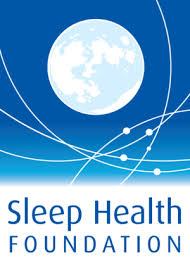
Newcastle, NSW, Australia Study of Alternative Therapies in Hypersomnia
RECRUITMENT COMPLETE during 2020. The Adult Sleep Laboratory in Newcastle, NSW, Australia recruited adults with IH for a research study investigating the effectiveness of alternative therapies on sleep and daytime alertness. Visit the Sleep Health Foundation website for more information.
RECRUITMENT COMPLETE during 2020. The Adult Sleep Laboratory in Newcastle, NSW, Australia recruited adults with IH for a research study investigating the effectiveness of alternative therapies on sleep and daytime alertness. Visit the Sleep Health Foundation website for more information.
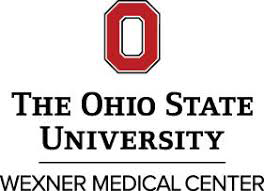
Transcranial Direct Current (tDCS) Stimulation Therapy for Central Hypersomnia Without Cataplexy
STUDY TERMINATED due to lack of funding as of July 2020: CLICK HERE. See also: A Pilot Study of tDCS Looks Promising for the Treatment of Idiopathic Hypersomnia.
STUDY TERMINATED due to lack of funding as of July 2020: CLICK HERE. See also: A Pilot Study of tDCS Looks Promising for the Treatment of Idiopathic Hypersomnia.

Validation of Non-Invasive Miniature Optical Sensors for Scoring Sleep Stages
RECRUITMENT COMPLETE as of June 2020: CLICK HERE.
RECRUITMENT COMPLETE as of June 2020: CLICK HERE.

Balance Therapeutics’ Study of Oral BTD-001 in Adults With IH (Arise2)
RECRUITING COMPLETED as of April 2020—adults age 18 to 70 with IH (including those currently on a stimulant regimen) across the USA (and Canada): ClinicalTrials.gov. BTD-001 is a GABA-antagonist that may possibly work similarly to flumazenil. In 2020, Balance Therapeutics concluded this study, and the data were inconclusive. The company does not plan any further trials related to IH, and they have wound down operations. Preliminary Results: reported at the 2019 World Sleep Congress. IH Symptom Diary: Development of a New Patient Reported Outcome (PRO) Measure Baseline Characteristics of IH Subjects Enrolled in a Clinical Trial (Arise2) Are Reports of Mental Fog From Patients With IH Mediated by Objective Measures of Daytime Sleepiness? Characteristics of Subjects Excluded From an IH Randomized Clinical Trial (Arise2) Results and information from the previous trial, Arise1: In 2015, Balance Therapeutics announced the launch of the first double-blind, placebo-controlled, crossover, multicenter study of a drug (BTD-001) for the treatment of idiopathic hypersomnia (IH) and type 2 narcolepsy (T2N) in adults (Arise1): CLICK HERE for more information. Results as of December 2017: An open-label study of the efficacy, safety and tolerability of oral BTD-001 in adults with idiopathic hypersomnia or narcolepsy type 2.
RECRUITING COMPLETED as of April 2020—adults age 18 to 70 with IH (including those currently on a stimulant regimen) across the USA (and Canada): ClinicalTrials.gov. BTD-001 is a GABA-antagonist that may possibly work similarly to flumazenil.
In 2020, Balance Therapeutics concluded this study, and the data were inconclusive. The company does not plan any further trials related to IH, and they have wound down operations.
Preliminary Results: reported at the 2019 World Sleep Congress.
Results and information from the previous trial, Arise1:
In 2015, Balance Therapeutics announced the launch of the first double-blind, placebo-controlled, crossover, multicenter study of a drug (BTD-001) for the treatment of idiopathic hypersomnia (IH) and type 2 narcolepsy (T2N) in adults (Arise1): CLICK HERE for more information. Results as of December 2017: An open-label study of the efficacy, safety and tolerability of oral BTD-001 in adults with idiopathic hypersomnia or narcolepsy type 2.
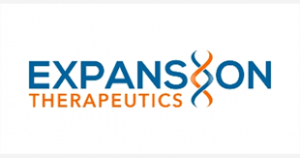
Safety, Tolerability and Pharmacokinetics of ERX-963 in Adults With Myotonic Dystrophy Type 1
STUDY COMPLETED April 2020: CLICK HERE. DM1 is often associated with hypersomnia. The study purpose is to evaluate the safety and tolerability of ERX-963 and its potential use as a treatment to reduce excessive daytime sleepiness / hypersomnia and improve cognitive function in DM1 participants compared to placebo treatment. Read more: Viewing Hypersomnias Through the Lens of Myotonic Dystrophy.
STUDY COMPLETED April 2020: CLICK HERE. DM1 is often associated with hypersomnia. The study purpose is to evaluate the safety and tolerability of ERX-963 and its potential use as a treatment to reduce excessive daytime sleepiness / hypersomnia and improve cognitive function in DM1 participants compared to placebo treatment.
Read more: Viewing Hypersomnias Through the Lens of Myotonic Dystrophy.
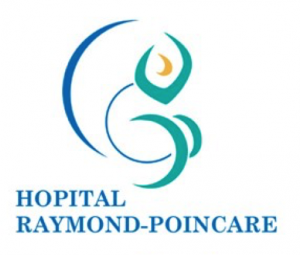
Importance of Sleep Deprivation in Differential Diagnosis of Primary Hypersomnia
STUDY COMPLETE as of January 2020: CLICK HERE.
STUDY COMPLETE as of January 2020: CLICK HERE.
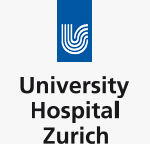
The Role of the Circadian System in Neurological Sleep-Wake Disorders
As of 2020, recruitment status now unknown: CLICK HERE.
As of 2020, recruitment status now unknown: CLICK HERE.

Clinical Outcomes in Narcolepsy and Cataplexy: An Evaluation of Reboxetine Treatment (CONCERT)
RECRUITING COMPLETE: CLICK HERE. Axsome Therapeutics is enrolling people with narcolepsy with cataplexy (only) for a study of the efficacy of AXS-12 (reboxetine) for treatment of cataplexy and excessive daytime sleepiness. AXS-12 is an oral norepinephrine reuptake inhibitor (NRI). See Axsome’s follow-up Symphony study.
RECRUITING COMPLETE: CLICK HERE. Axsome Therapeutics is enrolling people with narcolepsy with cataplexy (only) for a study of the efficacy of AXS-12 (reboxetine) for treatment of cataplexy and excessive daytime sleepiness. AXS-12 is an oral norepinephrine reuptake inhibitor (NRI).
See Axsome’s follow-up Symphony study.
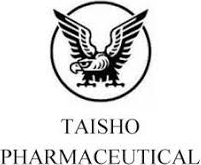
A Study to Evaluate the Safety and Efficacy of TS-091 in Patients With Narcolepsy
RECRUITMENT COMPLETE Fall 2019, in Japan and S. Korea: CLICK HERE for the ClinicalTrials.gov listing. Taisho Pharmaceutical’s TS-091 is a histamine H3 receptor inverse agonist (similar to pitolisant). As of October 2019, the study of TS-091 appears to have been discontinued for both hypersomnia and narcolepsy. Read more HERE.
RECRUITMENT COMPLETE Fall 2019, in Japan and S. Korea: CLICK HERE for the ClinicalTrials.gov listing. Taisho Pharmaceutical’s TS-091 is a histamine H3 receptor inverse agonist (similar to pitolisant). As of October 2019, the study of TS-091 appears to have been discontinued for both hypersomnia and narcolepsy. Read more HERE.

The PATH Study: Psychosocial Adjunctive Treatment for Hypersomnia
RECRUITING COMPLETE as of August 2019: CLICK HERE for more information. The purpose of this study was to develop and test a new psychological treatment designed to improve psychosocial functioning in people with hypersomnia. Results: December 2020 article in the Journal of Clinical Sleep Medicine: Developing a cognitive behavioral therapy for hypersomnia using telehealth: a feasibility study
RECRUITING COMPLETE as of August 2019: CLICK HERE for more information. The purpose of this study was to develop and test a new psychological treatment designed to improve psychosocial functioning in people with hypersomnia.
Results:
- December 2020 article in the Journal of Clinical Sleep Medicine: Developing a cognitive behavioral therapy for hypersomnia using telehealth: a feasibility study

Investigation of Clinical Feature and Brain Function in Narcoleptic Patients
RECRUITMENT STATUS unknown; study completion date was scheduled for December 2019: CLICK HERE.
RECRUITMENT STATUS unknown; study completion date was scheduled for December 2019: CLICK HERE.
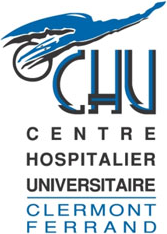
Exploration of the Reward System by Functional MRI in Narco-Cataplexy Patients With and Without REM Sleep Behavior Disorder
RECRUITMENT STATUS unknown; study completion date was scheduled for June 2019: CLICK HERE.
RECRUITMENT STATUS unknown; study completion date was scheduled for June 2019: CLICK HERE.

XW Labs’ Phase 1 Study in Australia for Treatment of Narcolepsy With XW10172
Study completed May 2019. See XW Labs Initiates First-in-Human Phase I Study for Novel Narcolepsy Treatment. More information at the Australian New Zealand Clinical Trials Registry. May 2021: XWPharma Announces Abstract for XW10172 Accepted for Presentation at the Associated Professional Sleep Societies SLEEP 2021 Annual Meeting. “XW10172 is a conjugate of the GABAB receptor agonist, oxybate, that is in development as a modified release formulation intended to provide the desired tolerability and efficacy based on once-nightly dosing. The drug and formulation are designed to deliver oxybate without the sodium content of other products that is associated with increased cardiovascular health risk and monitoring requirements. The company plans to develop XW10172 for treatment of sleep disorders associated with neurodegenerative diseases, starting with excessive daytime sleepiness in patients with Parkinson’s disease and cataplexy and excessive daytime sleepiness in patients with narcolepsy.”
Study completed May 2019. See XW Labs Initiates First-in-Human Phase I Study for Novel Narcolepsy Treatment. More information at the Australian New Zealand Clinical Trials Registry.
May 2021: XWPharma Announces Abstract for XW10172 Accepted for Presentation at the Associated Professional Sleep Societies SLEEP 2021 Annual Meeting.
“XW10172 is a conjugate of the GABAB receptor agonist, oxybate, that is in development as a modified release formulation intended to provide the desired tolerability and efficacy based on once-nightly dosing. The drug and formulation are designed to deliver oxybate without the sodium content of other products that is associated with increased cardiovascular health risk and monitoring requirements. The company plans to develop XW10172 for treatment of sleep disorders associated with neurodegenerative diseases, starting with excessive daytime sleepiness in patients with Parkinson’s disease and cataplexy and excessive daytime sleepiness in patients with narcolepsy.”

Safety and Efficacy of THN102 on Sleepiness in Narcoleptic Patients
RECRUITMENT COMPLETE as of Fall 2018: see clinicaltrials.gov. Theranexus’ THN102 is a combination of modafinil and flecanide combo. Flecainide is “an antiarrhythmic agent used in this instance at very low dosages and for its modulating effects on the glial connexins.” Results: April 2016: First Clinical Study Completed on Effectiveness of Possible Narcolepsy Drug THN102. April 2018: Hungary OKs Phase 2 Clinical Trial of Drug Candidate for Excessive Daytime Sleepiness in Parkinson’s. July 2018: Theranexus presents data on stimulating effect of new drug candidate. THN 102 is currently in Phase II clinical evaluation in narcolepsy and a Phase II trial in Parkinson’s is also planned. February 2019: Theranexus Announces Preliminary Results of Phase II Trial of Thn102 on Narcolepsy Patients. “THN102’s safety and tolerability profile has been deemed very satisfactory. However, the results do not indicate any difference in efficacy between THN102 (combination of modafinil and flecainide) and modafinil alone with respect to the trial’s primary endpoint (Epworth Sleepiness Scale). An over-representation of poorly responding narcoleptic patients may account for THN102’s lack of difference in efficacy from the standard of care drug.” September 2019: Efficacy of THN102 on vigilance and cognition during 40-hour total sleep deprivation in healthy subjects: Glial connexins as a therapeutic target. “THN102 seems more efficient than modafinil on vigilance, working memory and executive functions, opening new perspectives in management of hypersomnolence disorders.” September 2020: THN102 Improves Excessive Daytime Sleepiness in Parkinson Disease.
RECRUITMENT COMPLETE as of Fall 2018: see clinicaltrials.gov. Theranexus’ THN102 is a combination of modafinil and flecanide combo. Flecainide is “an antiarrhythmic agent used in this instance at very low dosages and for its modulating effects on the glial connexins.”
Results:
- July 2018: Theranexus presents data on stimulating effect of new drug candidate. THN 102 is currently in Phase II clinical evaluation in narcolepsy and a Phase II trial in Parkinson’s is also planned.
- February 2019: Theranexus Announces Preliminary Results of Phase II Trial of Thn102 on Narcolepsy Patients. “THN102’s safety and tolerability profile has been deemed very satisfactory. However, the results do not indicate any difference in efficacy between THN102 (combination of modafinil and flecainide) and modafinil alone with respect to the trial’s primary endpoint (Epworth Sleepiness Scale). An over-representation of poorly responding narcoleptic patients may account for THN102’s lack of difference in efficacy from the standard of care drug.”
- September 2019: Efficacy of THN102 on vigilance and cognition during 40-hour total sleep deprivation in healthy subjects: Glial connexins as a therapeutic target. “THN102 seems more efficient than modafinil on vigilance, working memory and executive functions, opening new perspectives in management of hypersomnolence disorders.”
- September 2020: THN102 Improves Excessive Daytime Sleepiness in Parkinson Disease.
Umecrine Cognition’s Phase IIa Study of GR3027 in Patients With IH
RECRUITING COMPLETE as of Fall 2018. GR3027 was originally developed with the intention to reverse the hypersomnolence and impairments in cognition that occur in the clinical setting of liver failure – aka, hepatic encephalopathy. In October of 2017, Umecrine Cognition expanded their study of GR3027 to IH (see Umecrine Cognition Expands Study of New Medicine GR3027 to IH). In January, 2019, Umecrine Cognition announced their overall results from their Phase 2a Study. The primary study objectives were met in regard to safety and pharmacokinetics and also showed preliminary evidence of clinical efficacy. CLICK HERE to find out more about these results. As of November, 2020, although GR3027 continues to be tested for liver failure, there has been no further development for IH. Read more HERE.
RECRUITING COMPLETE as of Fall 2018. GR3027 was originally developed with the intention to reverse the hypersomnolence and impairments in cognition that occur in the clinical setting of liver failure – aka, hepatic encephalopathy. In October of 2017, Umecrine Cognition expanded their study of GR3027 to IH (see Umecrine Cognition Expands Study of New Medicine GR3027 to IH).
In January, 2019, Umecrine Cognition announced their overall results from their Phase 2a Study. The primary study objectives were met in regard to safety and pharmacokinetics and also showed preliminary evidence of clinical efficacy. CLICK HERE to find out more about these results.
As of November, 2020, although GR3027 continues to be tested for liver failure, there has been no further development for IH. Read more HERE.

Survey Study on Autonomic Impairment in Adults With Idiopathic Hypersomnia (IH)
RECRUITING COMPLETE as of September 2018. In 2018, HF promoted this Stanford University-based survey study of autonomic impairment in adults with IH. Autonomic dysfunction includes symptoms like dizziness, bowel or bladder trouble, and temperature and heart rate dysregulation. Results: May 2019 Autonomic Symptom Burden in Idiopathic Hypersomnia: abstract published as part of the annual meeting of the AAN (American Academy of Neurology). The researchers found that people with IH reported extremely high levels of autonomic dysfunction, on par with other conditions of severe autonomic failure, like MSA (multiple system atrophy) and diabetes. “Symptoms of ANS impairment, sleepiness, and fatigue are more severe in individuals with IH compared to controls. Moreover, ANS symptom burden correlates moderately with higher levels of sleepiness and fatigue.” The researchers also hope to complete follow-up studies and provide a more detailed exploration of the potential mechanisms involved. “Future analysis will focus on COMPASS [composite autonomic symptom score-31] subscores and objective autonomic testing to help identify symptomatic domains, with the goal of more focused therapeutic targets for patients with IH.” May 2020 Frequency and severity of autonomic symptoms in idiopathic hypersomnia: publication in the Journal of Clinical Sleep Medicine. To read our original SomnusNooze article about this study, CLICK HERE.
RECRUITING COMPLETE as of September 2018. In 2018, HF promoted this Stanford University-based survey study of autonomic impairment in adults with IH. Autonomic dysfunction includes symptoms like dizziness, bowel or bladder trouble, and temperature and heart rate dysregulation.
Results:
- May 2019 Autonomic Symptom Burden in Idiopathic Hypersomnia: abstract published as part of the annual meeting of the AAN (American Academy of Neurology). The researchers found that people with IH reported extremely high levels of autonomic dysfunction, on par with other conditions of severe autonomic failure, like MSA (multiple system atrophy) and diabetes. “Symptoms of ANS impairment, sleepiness, and fatigue are more severe in individuals with IH compared to controls. Moreover, ANS symptom burden correlates moderately with higher levels of sleepiness and fatigue.” The researchers also hope to complete follow-up studies and provide a more detailed exploration of the potential mechanisms involved. “Future analysis will focus on COMPASS [composite autonomic symptom score-31] subscores and objective autonomic testing to help identify symptomatic domains, with the goal of more focused therapeutic targets for patients with IH.”
- May 2020 Frequency and severity of autonomic symptoms in idiopathic hypersomnia: publication in the Journal of Clinical Sleep Medicine.
To read our original SomnusNooze article about this study, CLICK HERE.
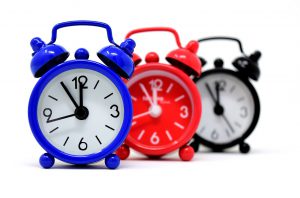
Clock and Narcolepsy Genetic Variants and the Effects of Stalevo® (Levodopa/Carbidopa/Entacapone) on Sleep Disorders in Parkinson’s Disease
RECRUITMENT STATUS UNKNOWN, in S. Korea: CLICK HERE. Study was scheduled for completion May 2017. Medicine available for off-label treatment in the U.S.
RECRUITMENT STATUS UNKNOWN, in S. Korea: CLICK HERE. Study was scheduled for completion May 2017. Medicine available for off-label treatment in the U.S.

BUNIHPPS—An Online Research Survey for Patients With Narcolepsy & IH
In 2015, a research team at Boston University developed BUNIHPPS—a survey research study for patients with narcolepsy and idiopathic hypersomnia. Also called the Boston University Narcolepsy and Idiopathic Hypersomnia Patient Perspectives Study, BUNIHPPS was an anonymous online survey forging into new frontiers by asking patients about their experiences with symptoms, the diagnostic process, and their attitudes and behaviors. Dr. William DeBassio, a pediatric neurologist, and Sara Kowalczyk, a doctoral student at Boston University, were the study investigators. For more information, CLICK HERE. Results: June 2016 ResearchGate: ADHD Symptoms in Narcolepsy and Idiopathic Hypersomnia. And download the poster presented at SLEEP 2016 Aug. 2016 Sleep Review article: Daytime Sleepiness and Attention Deficiencies Linked for Narcolepsy and Idiopathic Hypersomnia Patients Highlight the Need for Clinical Assessment 2016 SLEEP Abstract #0679: ADHD Symptoms Reported in Adults with Narcolepsy and Idiopathic Hypersomnia April 2017 ResearchGate: Health-Related Quality of Life in Narcolepsy and Idiopathic Hypersomnia. And download the PowerPoint presented at SLEEP 2017. April 2017 SLEEP Abstract #0652: Health-Related Quality of Life in Narcolepsy and Idiopathic Hypersomnia
In 2015, a research team at Boston University developed BUNIHPPS—a survey research study for patients with narcolepsy and idiopathic hypersomnia. Also called the Boston University Narcolepsy and Idiopathic Hypersomnia Patient Perspectives Study, BUNIHPPS was an anonymous online survey forging into new frontiers by asking patients about their experiences with symptoms, the diagnostic process, and their attitudes and behaviors. Dr. William DeBassio, a pediatric neurologist, and Sara Kowalczyk, a doctoral student at Boston University, were the study investigators. For more information, CLICK HERE.
Results:
- 2016 SLEEP Abstract #0679: ADHD Symptoms Reported in Adults with Narcolepsy and Idiopathic Hypersomnia
- April 2017 ResearchGate: Health-Related Quality of Life in Narcolepsy and Idiopathic Hypersomnia. And download the PowerPoint presented at SLEEP 2017.
- April 2017 SLEEP Abstract #0652: Health-Related Quality of Life in Narcolepsy and Idiopathic Hypersomnia
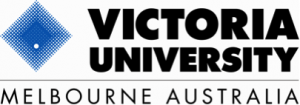
Health and Well-Being in Those With and Without a Disorder of Daytime Sleepiness—A Research Survey From Australia
In 2015, Victoria University in Melbourne, Australia, commenced a study about the general health and well-being of people within three groups. The first group was those people with both narcolepsy and cataplexy. (Cataplexy is a sudden loss of muscle tone, often triggered by emotional arousal.) The second group was people with either narcolepsy-without-cataplexy or idiopathic hypersomnia. The third group had no disorders of excessive daytime sleepiness. This project was part of a PhD program by Samantha Gauci (under the supervision of Prof. Dorothy Bruck and Dr. Warwick Hosking). One question in the study was whether the presence of cataplexy in narcolepsy was associated with a different level of general health and well-being (and some symptoms such as pain and migraines). Results: March 2017: Narcolepsy, cataplexy, hypocretin and co-existing other health complaints: A review October 2017: Chronic pain in narcolepsy: investigation of differences in those with and without cataplexy
In 2015, Victoria University in Melbourne, Australia, commenced a study about the general health and well-being of people within three groups. The first group was those people with both narcolepsy and cataplexy. (Cataplexy is a sudden loss of muscle tone, often triggered by emotional arousal.) The second group was people with either narcolepsy-without-cataplexy or idiopathic hypersomnia. The third group had no disorders of excessive daytime sleepiness. This project was part of a PhD program by Samantha Gauci (under the supervision of Prof. Dorothy Bruck and Dr. Warwick Hosking). One question in the study was whether the presence of cataplexy in narcolepsy was associated with a different level of general health and well-being (and some symptoms such as pain and migraines).
Results:

The TONES Study (Jazz Pharmaceuticals’ JZP-110/Solriamfetol)
In 2015, doctors began conducting the TONES medical research study of an investigational product (JZP-110) designed to treat sleepiness and to help adults stay awake. The researchers wanted to evaluate the product’s effectiveness against excessive sleepiness when taken once a day for 12 weeks. Participants had to have been diagnosed with narcolepsy and sleeping at least 6 hours a night. For further info, CLICK HERE. Results of related research into JZP-110: June 2017: JZP-110 Study Finds Positive Efficacy Results in Patients With Excessive Sleepiness March 2018: FDA Accepts Jazz Pharmaceutical’s New Drug Application for Solriamfetol (JZP-110) for Excessive Sleepiness April 2018: Narcolepsy Types 1 and 2 Significantly Improved With Solriamfetol Treatment June 2018: In the Pipeline – Narcolepsy: Solriamfetol Improves Wakefulness in Narcolepsy January 2019: A Randomized Study of Solriamfetol for Excessive Sleepiness in Narcolepsy. This phase 3 study evaluated the safety and efficacy of solriamfetol in narcolepsy. March 2019: Solriamfetol was approved by the U.S. FDA for the treatment of sleepiness caused by narcolepsy and obstructive sleep apnea.
In 2015, doctors began conducting the TONES medical research study of an investigational product (JZP-110) designed to treat sleepiness and to help adults stay awake. The researchers wanted to evaluate the product’s effectiveness against excessive sleepiness when taken once a day for 12 weeks. Participants had to have been diagnosed with narcolepsy and sleeping at least 6 hours a night. For further info, CLICK HERE.
Results of related research into JZP-110:
- January 2019: A Randomized Study of Solriamfetol for Excessive Sleepiness in Narcolepsy. This phase 3 study evaluated the safety and efficacy of solriamfetol in narcolepsy.
- March 2019: Solriamfetol was approved by the U.S. FDA for the treatment of sleepiness caused by narcolepsy and obstructive sleep apnea.
